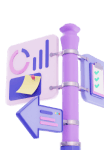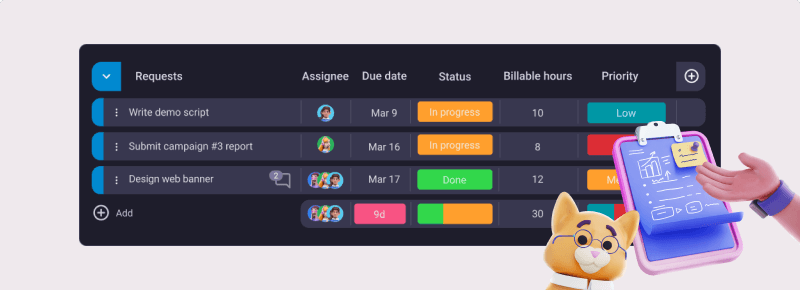A product roadmap is more than just a plan — it’s the backbone of a successful project.
Whether you’re bringing a new product to market or steering a major update, this turns vision into action.
The main purpose is to communicate the company’s desired outcomes for product development to its stakeholders, ensuring alignment and transparency.
We’ll explain the greatest advantages of product roadmaps, provide practical examples, and teach you how to create a product roadmap to offer deliverables that hit the mark every time.
So, keep reading!
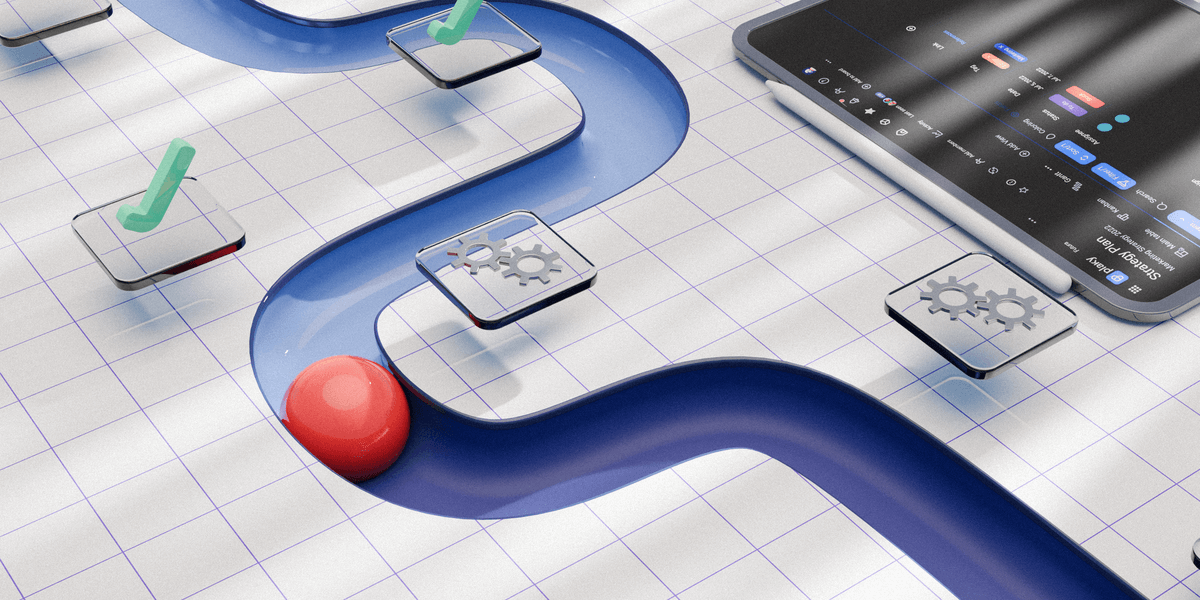
Table of Contents
What is a product roadmap?
A product roadmap is a high-level strategic plan that outlines the vision and direction of the product development process over time.
Put simply, it’s a map showing how a company plans to manage its product strategy. So, it coordinates team efforts and stakeholders around a shared understanding of what the product aims to achieve and when.
The 3 main types of product roadmaps are:
- Timeline-based roadmaps — for projects where stakeholders want a clear, trackable timeline,
- Feature-based roadmaps — for teams primarily focused on delivering value through specific features, and
- Goal-based roadmaps — for strategic alignment and long-term planning.
Whichever type (or hybrid combo) you go for, remember that a product roadmap is a living document open to change according to the current demands of relevant markets.
Build a product roadmap in PlakyWhy you need a product roadmap
A strong product roadmap has numerous benefits, most notably:
- Defining your product development strategy to boost project success chances,
- Guiding the strategy execution process so that you stay on track,
- Keeping everyone aligned with the ongoing plans,
- Helping identify potential problems to eliminate wrong turns, and
- Allowing different teams to collaborate better.
In essence, a visual roadmap enables smooth project execution and more effective communication across teams and stakeholders.
💡 Plaky Pro Tip
To learn more about the importance of communication in project management, check out this article:
7 examples of effective product roadmaps
Here are 7 examples of product roadmaps to consider depending on your goals and project complexity.
1. Features roadmap
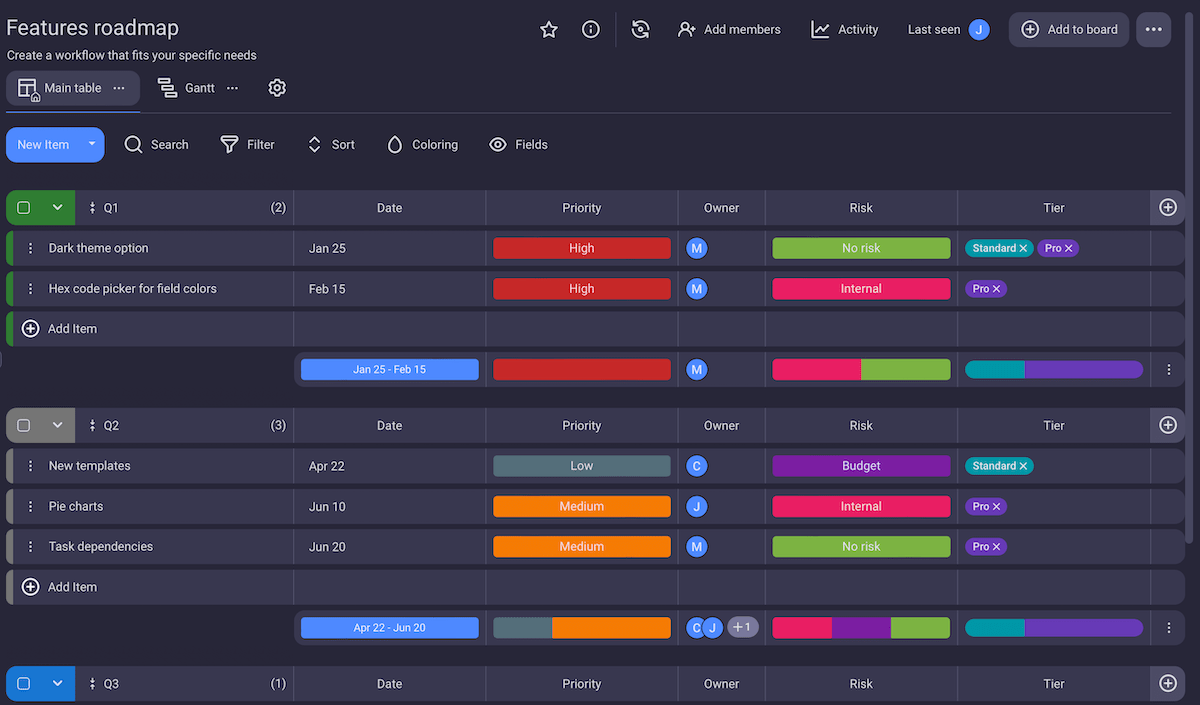
A features roadmap is a popular choice because it offers concrete and practical information in terms of what needs to be delivered and when.
You may choose to group features based on their attributes (quality, design, experience, etc.) or development period (such as Q1, Q2, and so on).
Prioritizing key feature releases helps the team concentrate on high-impact tasks, ensuring that the most valuable features within the product plan are developed first.
Besides due dates and priority levels, feel free to specify any other details that might prove useful, such as task owners or potential project risks, as we did in the product roadmap example above.
2. Sprint plan roadmap
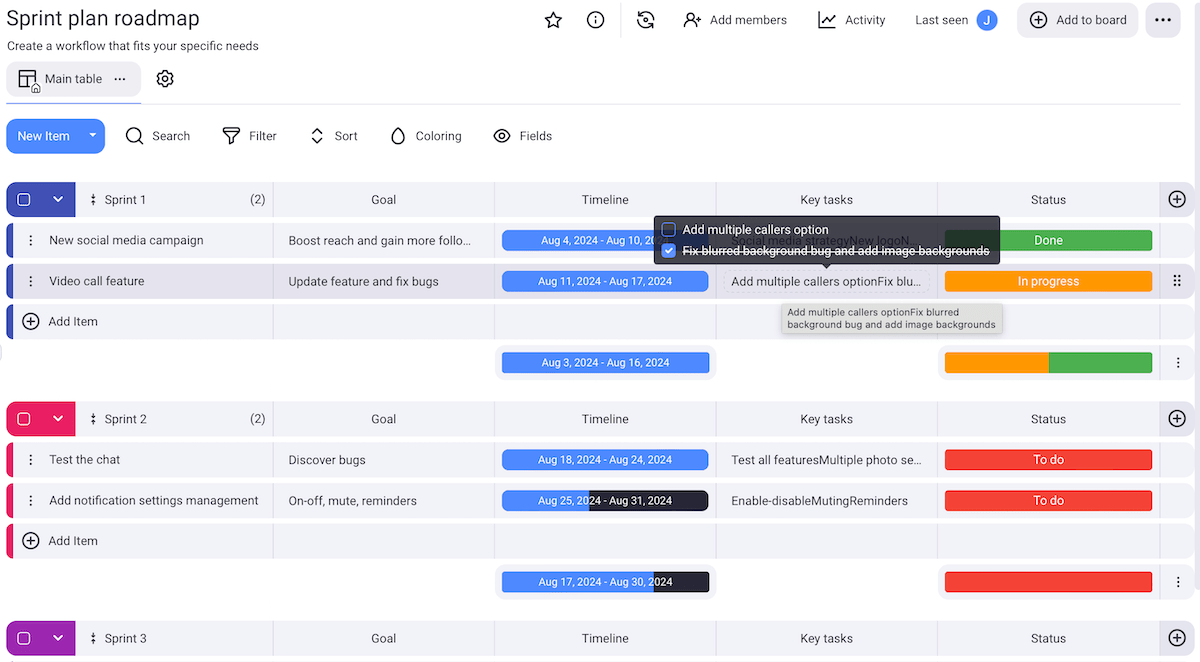
As its name suggests, a Sprint plan roadmap is all about Sprints — short, repeating blocks of time within which certain tasks are completed.
Each Sprint has well-defined objectives, ensuring the team knows what they need to achieve by the end of each cycle.
The consistent, iterative progress makes it ideal for teams working in fast-paced, agile environments.
As you can see in the roadmap example above, this is excellent for breaking down complex projects into smaller, more manageable tasks. Frequent Sprints also enable:
- Continuous adjustments,
- Better transparency, and
- Prompt status updates.
3. Release plan roadmap
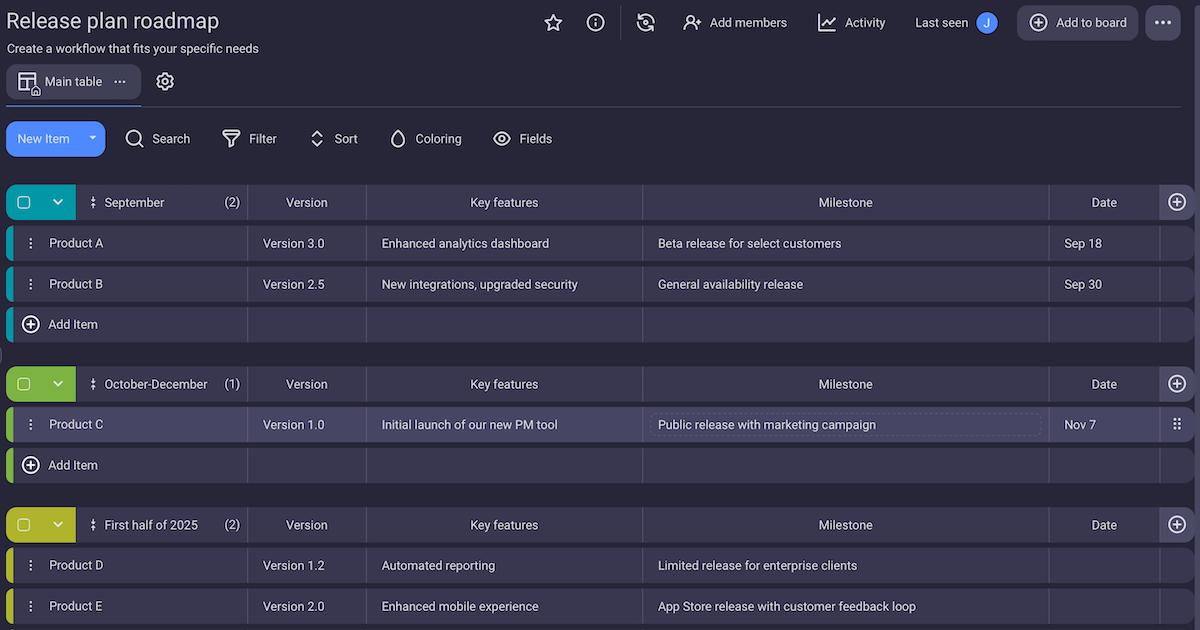
A release plan roadmap focuses on a company’s upcoming product releases.
This kind of roadmap specifies release dates and outlines the sequence of upcoming releases across various products or updates. You may include details of different versions or iterations being released, as well.
A release plan roadmap lets organizations see how upcoming products or updates agree with the company’s strategic aims.
The main benefit is helping identify potential conflicts or dependencies between releases. Also, resource allocation across multiple releases is easier to plan and manage.
4. Now-next-later roadmap
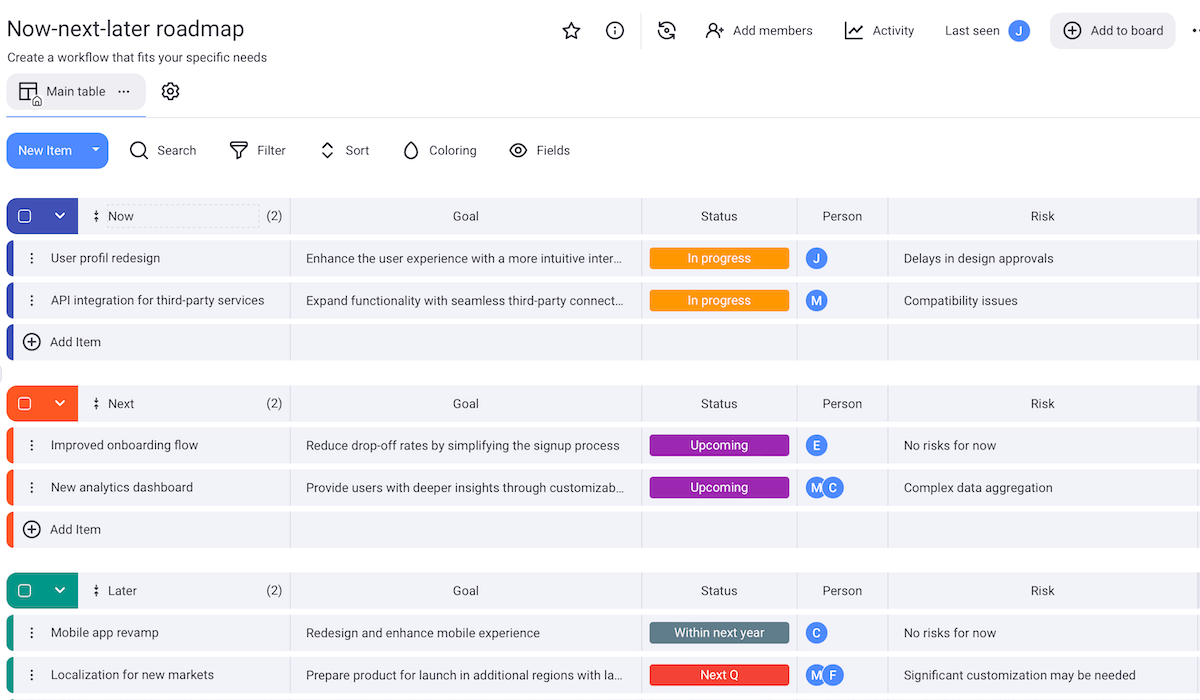
The now-next-later roadmap categorizes a product team’s targets into 3 brackets:
- Now — for tasks that should be done as soon as possible,
- Next — for tasks next in line after the “Now” tasks are finished, and
- Later — for tasks that should be done eventually.
Compared to the more deadline-focused roadmaps, the NNL approach has greater flexibility as it takes more relative time frames, and you aren’t bound by dates.
However, be careful not to have too many tasks in the “Later” bracket to avoid diluted focus and false expectations.
Due to their adaptable nature, now-next-later roadmaps are excellent for planning more general and long-term business goals. Combined with the S.M.A.R.T. goal criteria, they are sure to yield positive results.
5. Kanban roadmap
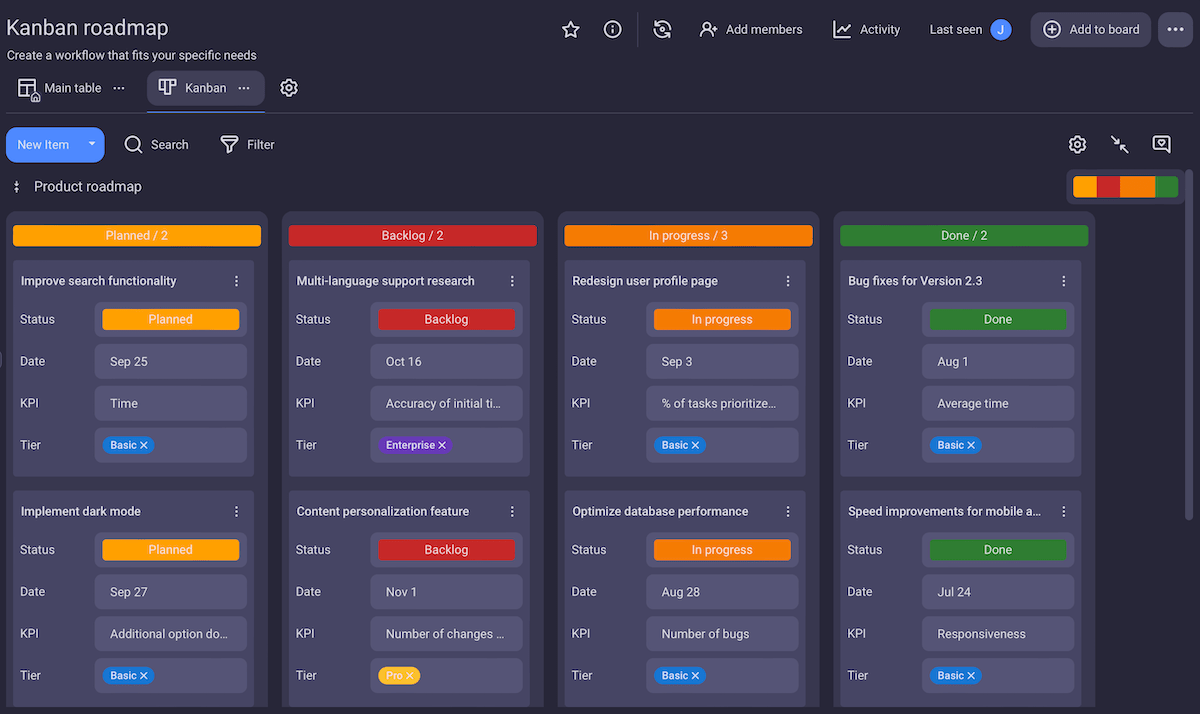
The Kanban method is another popular example of a product roadmap approach because it’s effective, yet simple to create.
When creating a Kanban roadmap, you divide tasks into smaller chunks and group them based on their current status:
- Backlog — for tasks that should be completed as soon as possible,
- In progress — for tasks currently underway,
- Planned — for tasks that should be dealt with eventually, and
- Done — for tasks that have been completed.
Kanban roadmaps allow metrics like cycle time, lead time, and throughput to be tracked directly on the board.
This makes it easier for you and your team members to make informed decisions on how to improve productivity and efficiency.
Create a Kanban product roadmap in Plaky6. Objectives roadmap
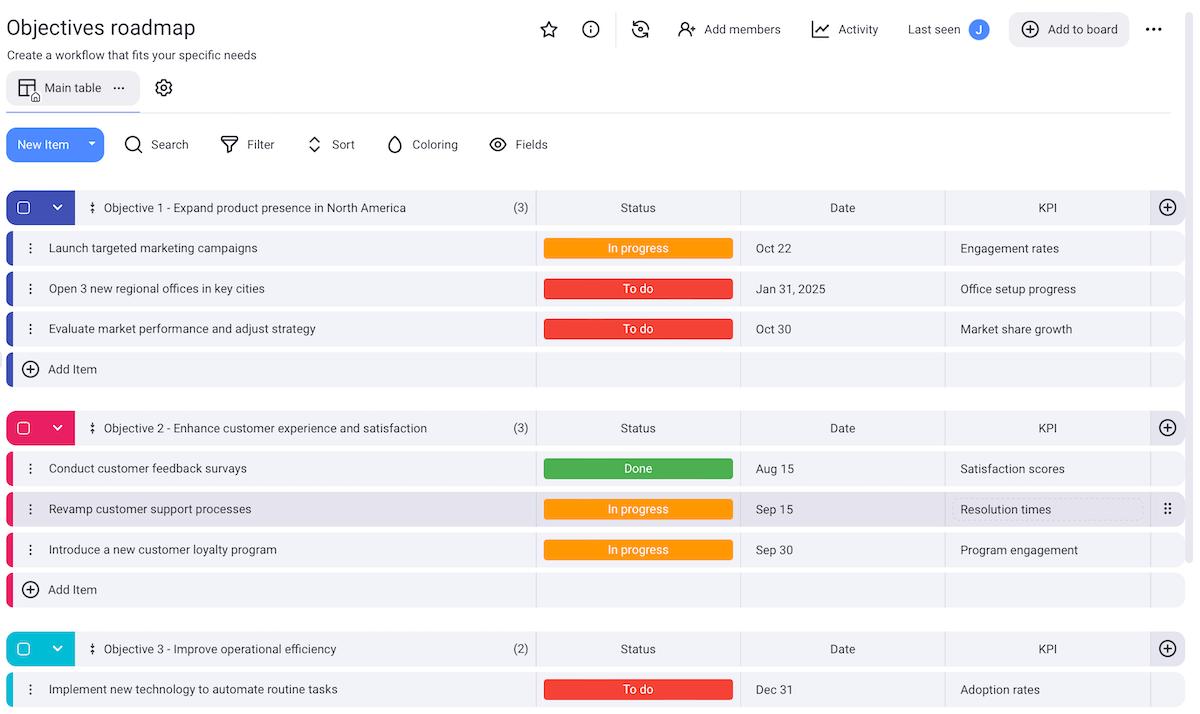
Sometimes you need a product management roadmap that shows the big picture.
As a strategic tool outlining key goals rather than specific features or deliverables, an objectives roadmap is commonly used by organizations seeking to align multiple departments with an overarching objective.
Having an insight into the bigger picture of what’s about to happen next, you’ll keep both the project team and stakeholders aligned with the planned product developments.
You can aim for various outcomes, such as:
- Expanding into new markets,
- Increasing revenue growth,
- Enhancing data security,
- Boosting brand awareness, etc.
7. Product launch roadmap
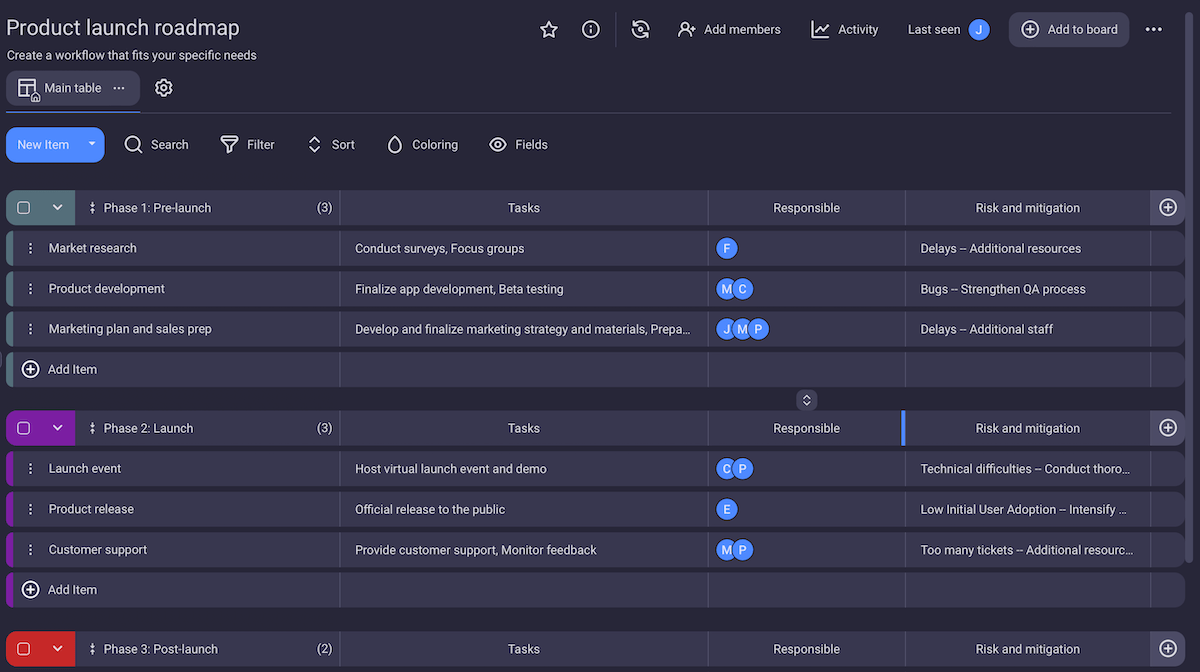
Bringing a new product to market is no easy task, so a detailed roadmap can be a lifesaver.
A product launch roadmap helps product managers coordinate different teams better, from engineering to sales and marketing teams.
Here are some elements you can include in this roadmap:
- Launch activities schedule,
- Specific phases of the product launch,
- Task allocation,
- Risk management,
- Marketing and promo activities, and
- Performance metrics.
Bonus: if you don’t want to make a roadmap from scratch, Plaky has a handy product launch template.
A product roadmap like this maximizes the chances of a successful product launch, keeping all the participants informed about the launch process, timelines, and everyone’s roles.
What is included in a product roadmap?
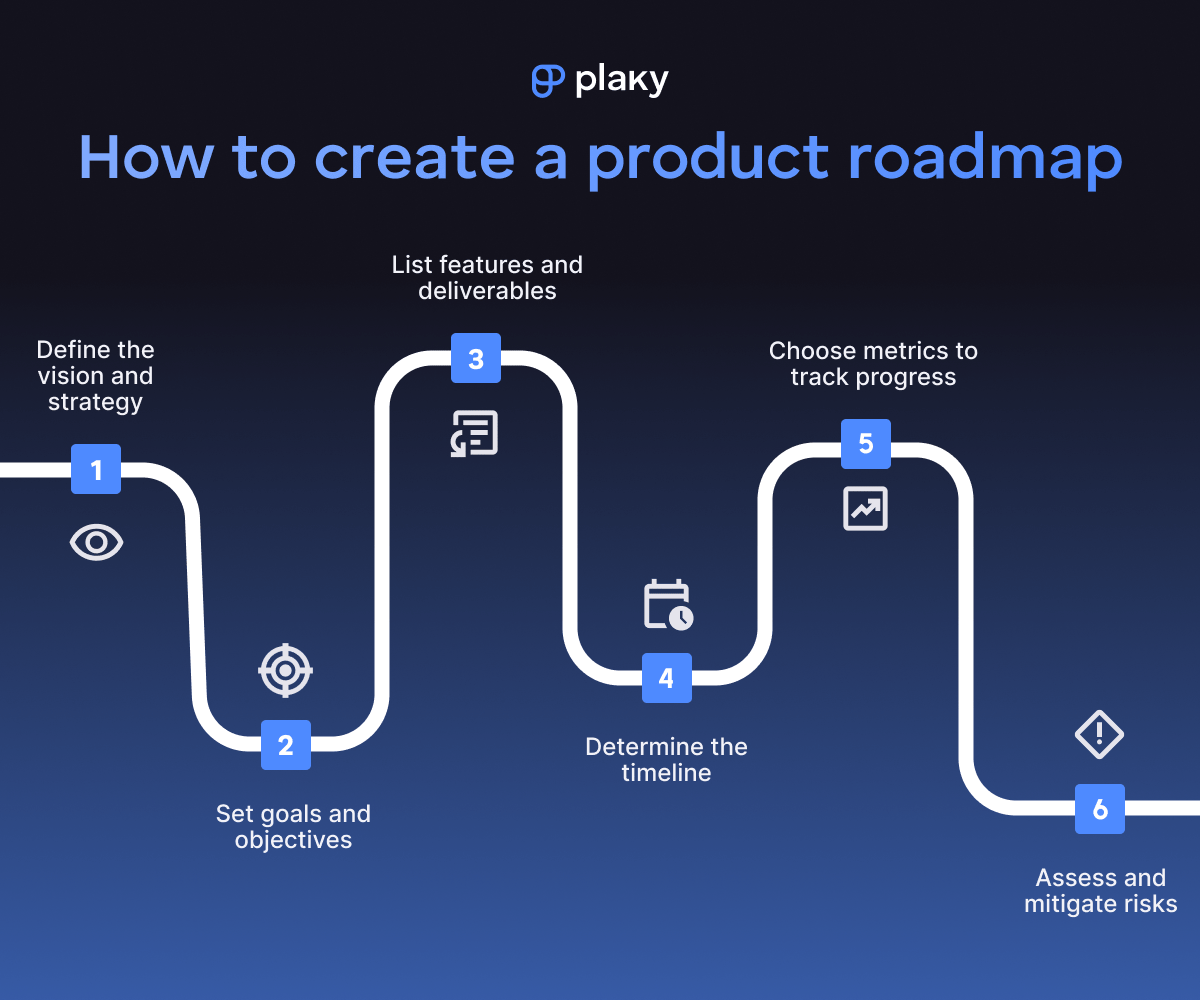
Solid product roadmaps contain elements that provide clarity and focus.
This can mean different things depending on the industry, product type, team size, etc., but certain ingredients are commonly used everywhere to make a visual project roadmap actionable:
- Vision and strategy — high-level goals and strategic direction, including key priorities and focus areas,
- Goals and objectives — specific, measurable outcomes that come with realizing the product vision,
- Features and deliverables — detailed descriptions of the functionalities or products being developed,
- Timeline — specific time frames for achieving each goal,
- Metrics — key performance indicators (KPIs) for precise progress tracking, and
- Risk assessment — potential risks that may arise and mitigation strategies.
Once these elements are in place, the product team can work together to coordinate efforts, prioritize tasks, and monitor development against the roadmap, typically by relying on trustworthy team collaboration software.
Build a strong product roadmap with Plaky
Whatever your product management strategy might be — it’s crucial to have a clear, realistic, and flexible roadmap.
You can achieve this with Plaky, a reliable project management tool that streamlines the planning process and allows you to adjust plans in real time.
If you need a starting point, use Plaky’s product roadmap template and customize the virtual boards however you like with different fields and color-coded status markers and tags.
For enhanced data visualization, you could also rely on conditional coloring to highlight priorities, proximity to deadlines, potential risks, and more. To better understand conditional coloring, check out this short video:
And since making a product roadmap is typically a collaborative effort, Plaky helps by fostering simple and transparent communication. Each item comes with a comments section where you can @mention other users. Better yet, you can share different files straight in the item card.
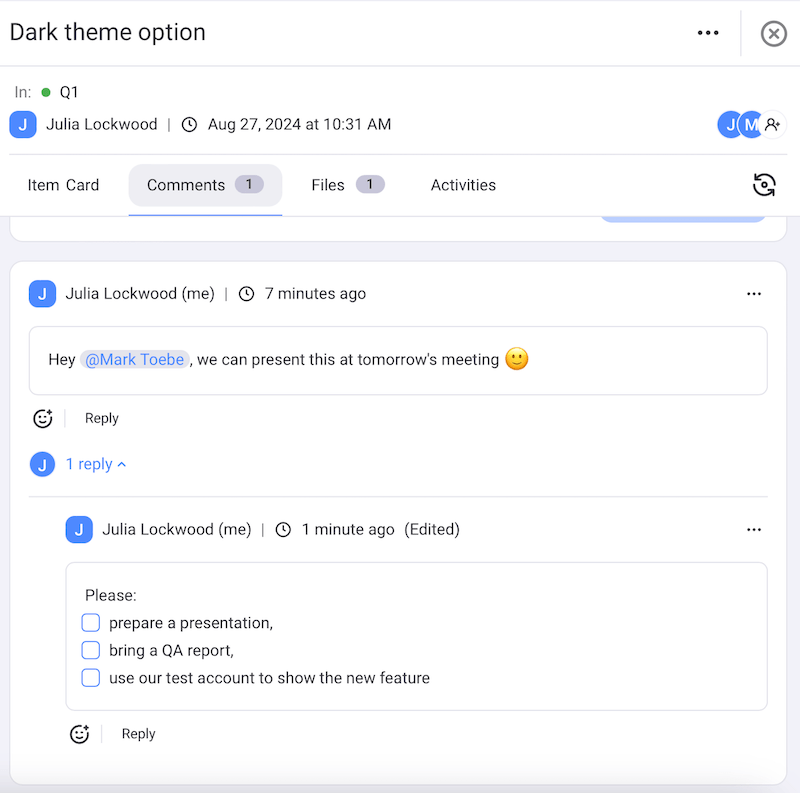
Keep your product vision and strategy transparent and safe. Build your product roadmap with Plaky today!


